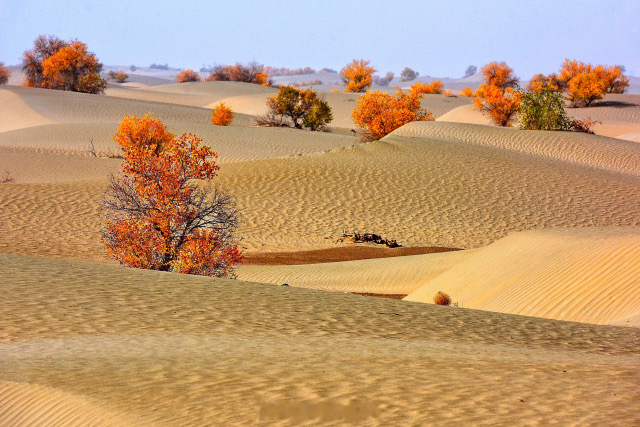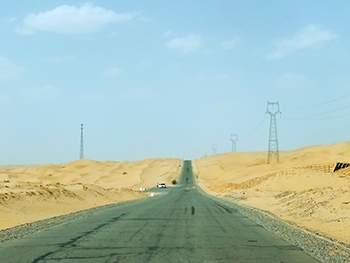
With a name that is thought to mean “Place of Ruins” or “Place of No Return”, the Taklamakan Desert doesn’t appear to have garnered the friendliest reputation! That being said, another interpretation of the name states that it means “Desert Under the Mountains,” which sounds far less ominous. Extending over a vast area of approximately 337,000 square kilometres (130,000 sq. mi), it represents the largest desert in China and the sixteenth largest in the world. To put that into perspective, it is nearly the size of Germany and over twice the size of England! It is bounded by the Kunlun Mountains to the south, the Pamir Mountains and the Tian Shan Mountains to the west and north, and the Gobi Desert to the east.
Historically, branches of the Silk Road skirted around its northern and southern edges, but travellers generally sought to avoid crossing this barren wasteland directly. Since little water was available along these routes, these wanderers depended on thriving oasis towns such as Kashgar, Marin, Niya, Kuqa, Gaochang, Turpan, Loulan, and Dunhuang, which were supported by melted snow trickling down from the nearby mountains. Due to desertification, the drying-up of water sources, and the eventual obsolescence of the Silk Road, many of these towns were tragically abandoned and lost to the sands of time. While they are no longer able to support human settlement, these ruins have offered up a myriad of archaeological treasures that imply Tocharian, Hellenistic, Indian, and Buddhist influences in the region.
The greatest discovery was made in the late 1980s, when archaeologists uncovered several well-preserved mummies, many of which were over 4,000 years old! Some of them demonstrated Caucasian features and were wearing European twill fabrics, acting as a testament to the early links between Europe and Asia. The most likely explanation is that these people were traveling along the Silk Road from Europe to China, but unfortunately succumbed to an untimely death and were buried in the desert. In fact, after making expeditions to the Taklamakan, famous explorers such as Xuanzang, Aurel Stein, Albert von Le Coq, Sven Anders Hedin, and Langdon Warner have all attested to its treacherous nature.

Unlike other deserts in China, the Taklamakan Desert is unrelentingly hostile and is virtually devoid of any vegetation throughout its barren expanse. During summer, temperatures can rise to 40 °C (104 °F), while in winter they plummet to around −20 °C (−4 °F). In short, this desert is known for blowing hot and cold! During the spring, as north, northwesterly, and northeasterly winds are channelled into the desert and meet near its centre, they can produce sandstorms as powerful as hurricanes. No wonder ancient travellers chose to give this desert a wide berth!
The strong winds and shifting sands largely prevent any vegetation from growing, but there are sparse clumps of desert plants in the depressions between sand dunes and along the edge of the desert itself. Tough thickets of tamarisk, nitre bushes, and reeds can be found between the dunes, while the desert fringes are able to support a wider range of species, including desert poplars, olive trees, camelthorn, and saltworts. This means the periphery of the desert is capable of sustaining a handful of animal species, such as gazelles, wild boars, wolves, foxes, Siberian deer, wild camel, bats, tufted larks, and Tarim jays. In turn, the sand dunes provide a home for rabbits, gerbils, field mice, jerboas, and even hedgehogs!